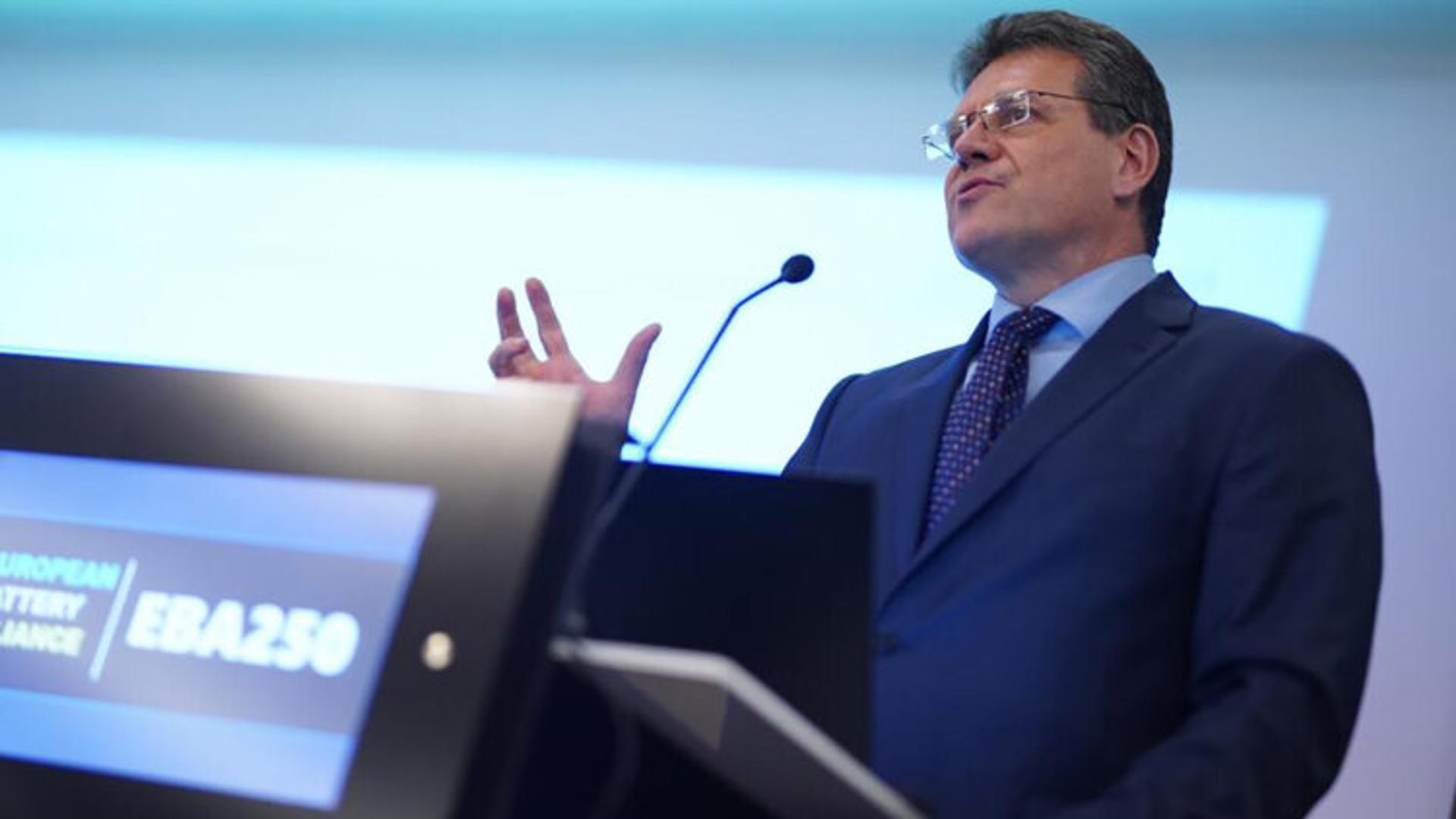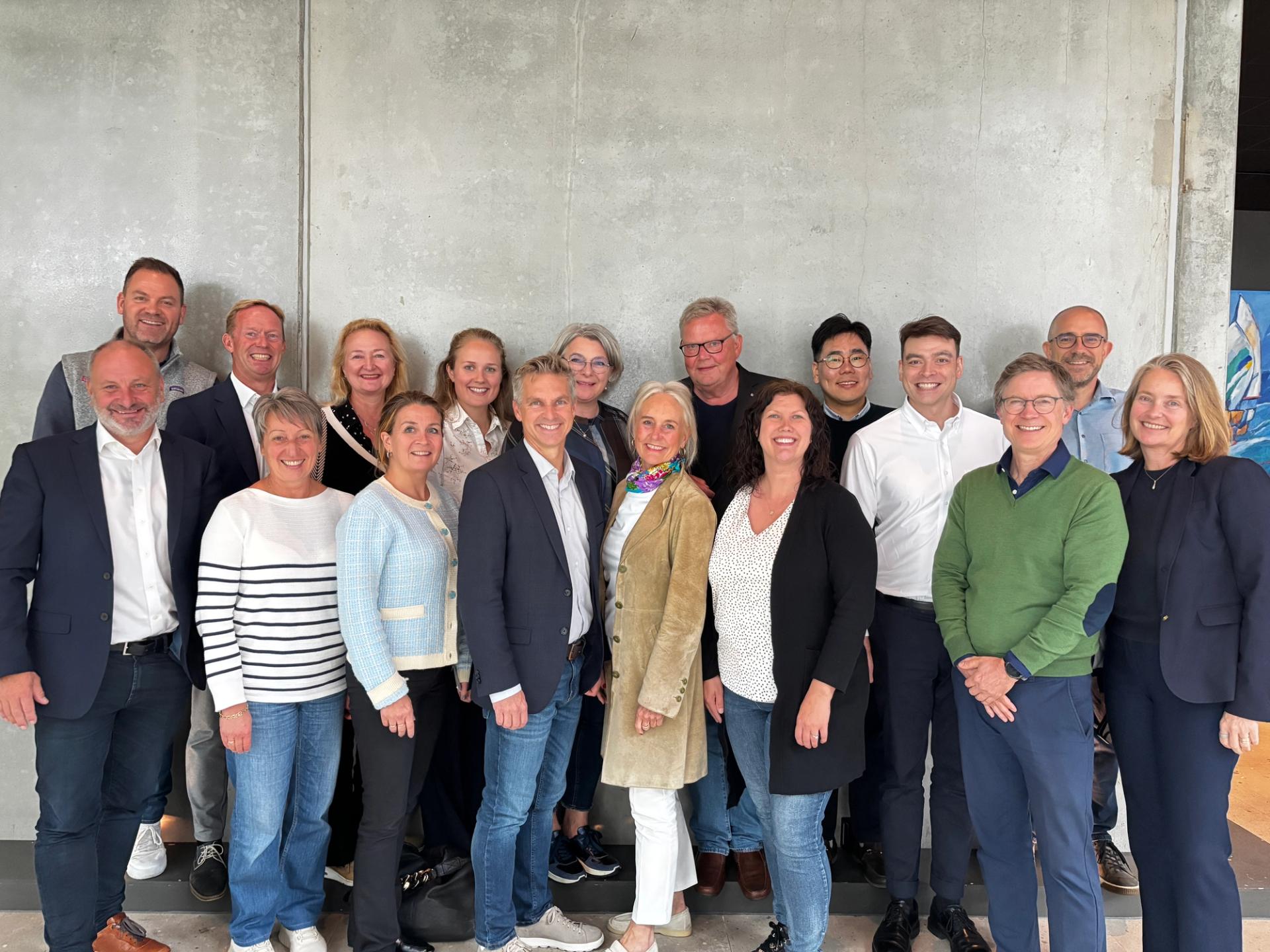Nordics playing a significant role in battery boom

Worldwide, the market is expected to grow by around 800 per cent in just five years, much of which will be in Europe, according to an analysis by Buck Consultants International. The new battery plants – which will produce mostly lithium-ion (Li-ion) batteries – will primarily serve the electric vehicle (EV) market.
The latest research from Transport & Environment (T&E) shows that European battery production is forecast to reach 238 GWh in 2025, 413 GWh in 2027, and 773 GWh in 2030, up from just 69 GWh in 2022.
Growing faster than in China
“Investment in battery technology and production in Europe has already surpassed that in China. The industry here is growing faster than on any other continent. A few years ago, we only had one European battery factory in the works,” says Thore Sekkenes, programme director at EBA250.
Managed by EIT InnoEnergy, EBA250 is the industrial development programme of the European Battery Alliance. The alliance was first launched in 2017 by the European Commission. Since then, EBA250 has been working to secure investments, initiate partnerships and adjust the regulatory framework with the aim of building a robust, competitive and sustainable battery industry in Europe.
A highly successful initiative
In just a few years, the initiative has attracted close to 800 industrial partners. By all metrics, it has been a success, particularly in terms of construction of plants for cell production and battery packs and of OEMs now having EV plans, many with products on the market. European battery investments throughout the value chain are now approaching EUR 100 billion – a nearly thirtyfold increase since 2017. However, more work is required upstream and in recycling.
According to Maroš Šefčovič, Vice-President of the European Commission for Interinstitutional Relations and Foresight, the European Battery Alliance is a resounding success.
“The alliance has changed the mindset around batteries in Europe. There is now a wider understanding of their essential role in delivering the EU’s strategic objectives in industrial competitiveness, decarbonisation of the economy and resilience in the industrial sectors,” he says.

Significant independence, upskilling and financing needed
EBA250 estimates that a complete European battery value chain – including materials processing, manufacturing, application and recycling – can reach a total annual value of EUR 250 billion and provide up to 4 million jobs. But its programme director Sekkenes stresses that battery independence is more than just a lucrative business opportunity. It is an absolute necessity if Europe is to meet its emission targets while retaining its automotive industries.
“By 2030, over 60 per cent of new vehicles sold in Europe will be electric. By 2040, we will reach 90 per cent,” he says. “The European transport sector, which employs nearly 15 million people, is at risk unless we can get more control over our own battery production.”
Three major challenges
Sekkenes identifies three areas with major challenges for the burgeoning industry:
“First, we need raw material independence. We are too dependent on importing minerals like lithium, graphite, cobalt and nickel from third countries. We have these minerals in Europe, so we must open more mines while ensuring sustainable and responsible mining. Refining and making active materials (i.e. anode and cathode material) will also play a key role. Recycling of materials is also important here, so as to retain materials after first use and to ensure that we build a circular economy from the start.”
Thore Sekkenes
Programme Director at EBA250
“Second, we need to close the knowledge gap. Although we have strong research communities, there is still a lack of homegrown industrial knowledge – that is, knowledge and skills related to production facilities and processes. In simpler terms, we do not have enough people who can build and run battery factories.”
Thore Sekkenes
Programme Director at EBA250
“Lastly comes the issue of financing. We need more investment and new initiatives. We need to foster innovative enterprises while helping big companies to transition. This is especially true for the upstream part of the value chain, i.e. mining and refining.”
Thore Sekkenes
Programme Director at EBA250
Leveraging Nordic advantages
“Batteries are at the heart of the industrial revolution, and I am convinced that Europe has what it takes to become the world’s leader in innovation, decarbonisation and digitisation,” says Šefčovič.
Sekkenes, too, is confident that Europe is up to the task, pointing out that European countries have everything they need to build a complete, competitive and sustainable battery value chain. The building blocks are in place, they just need to be refashioned for the task at hand.
Sekkenes believes that the Nordic countries, with an emphasis on Norway, Sweden and Finland, can play an important role in this regard.
“The Nordic countries bring a lot to the table in the European battery value chain. First, they have access to carbon-free and relatively inexpensive energy, like hydropower, providing cost-effective and CO2-free production of batteries. There is also a strong and highly developed industrial base here, both in terms of processing and mechanical industries. And lastly, Nordic countries have access to major financial resources to invest in this kind of technology.”
Nordic battery collaboration
The Nordic countries excel at cross-industry collaboration, a natural result of their historically close ties on trade and industry.
“The impetus for cooperation has come from industry itself. It began organically, with companies working together and investing in each other, one by one, over time,” says Benedicte Fasmer Waaler, Investment Manager at Invest in Norway, the official investment promotion agency of Norway.
A shining example of this is Hydrovolt, an EV battery recycling company, which began as a joint venture between Hydro, a Norwegian aluminium and renewable energy company, and Northvolt, a now-defunct Swedish battery manufacturer. Through recycling, Hydrovolt recovers copper, plastics, aluminium, and “black mass” containing valuable metals such as nickel, manganese, cobalt, graphite and lithium. Hydrovolt is wholly owned by Hydro as of January 2025.
Revving up for an even brighter future
Another impressive example is Norwegian company Morrow Batteries, which is on schedule to start battery production at its new plant in Arendal in Southern Norway in mid-2024.
“We are pleased about our industrial progress, which is taking us closer to production starting next summer. Morrow has already produced over 1 000 batteries at our Asian production line. We have a global research team at the Morrow Research Centre, the largest in the Nordics. We are on time and on schedule to deliver the batteries we need today and develop the batteries of tomorrow,” says Morrow CEO Lars Christian Bacher.
With the climate crisis firmly on the international agenda, the future for the EU and the Nordic region’s battery technology is bright.

